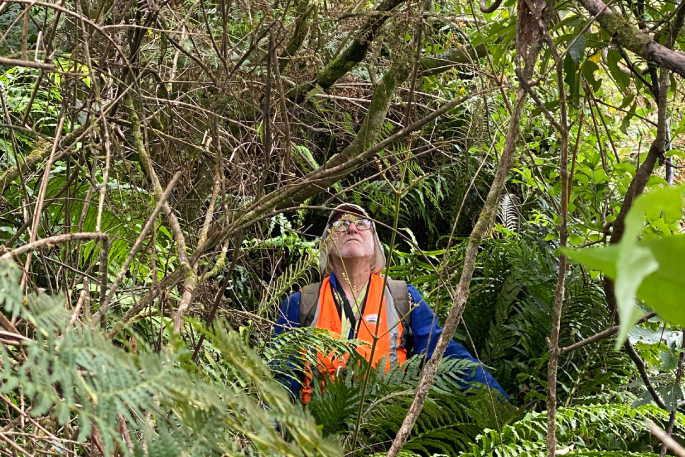Mistletoe abundance has increased more than 3600 per cent over 22 years in Tikitapu Scenic Reserve at Lake Ōkāreka thanks to the efforts of volunteers and staff across multiple organisations.
Established in 2002, the Ōkāreka Mistletoe Restoration Project aims to increase population of two threatened semi-parasitic mistletoe species in Tikitapu Scenic Reserve, Rotorua, through animal pest and weed control.
Mistletoes are semi-parasitic shrubby plants growing on host trees. They have green leaves that photosynthesise their own sugars but rely on a host plant for water and nutrients.
White mistletoe, Tupeia antarctica, which has a threat ranking of At Risk - Declining, has increased through the lifetime of the Ōkāreka project from 218 to 8044 live plants in 2024 within Tikitapu Scenic Reserve.
Regionally threatened green mistletoe, Ileostylus micranthus, has naturally colonised the reserve and now numbers at 56 plants, up from zero.
 Ōkāreka Mistletoe Restoration Project Mike Goodwin during the recent census at Tikitapu Scenic Reserve. Credit: Kirsty Brown/DOC
Ōkāreka Mistletoe Restoration Project Mike Goodwin during the recent census at Tikitapu Scenic Reserve. Credit: Kirsty Brown/DOC
Department of Conservation ranger Kristina Thompson says the phenomenal success has been down to the dedication of volunteers.
“The combined work of Rotorua Forest and Bird, Rotorua Botanical Society, and Landcare Ōkāreka, with the support of the mana whenua and local agencies, has seen the mistletoe flourish.
“The project enjoys ongoing support and engagement from Tūhourangi Tribal Authority, The Rotokakahi Board of Control, DOC, and Bay of Plenty Regional Council. It’s this shared commitment to a common goal which has achieved so much for mistletoe and the health of the Ōkāreka ngahere.”
Animal control prevents the high impact of possum browse on mistletoe and protects bird populations which disperse seed. Plant pest control ensures the survival of appropriate host plants.
Ōkāreka Mistletoe Restoration Project co-lead Mike Goodwin says the people who had the vision to start the project deserve recognition.
“It’s taken 20 years, they aren’t all here to see it, but we have a pretty spectacular result.”
Co-lead Margaret Dick agrees, saying the results are noticeable for more than just mistletoe.
“Residents who’ve lived here all their lives have commented on the amount of birdsong – it’s changed that much.”
National Volunteer Week Te Wiki Tūao ā-Motu honours the collective energies and mana of volunteers in New Zealand this June16-22.



0 comments
Leave a Comment
You must be logged in to make a comment.